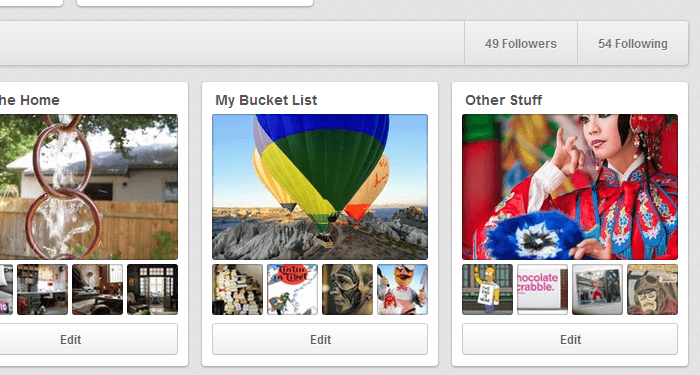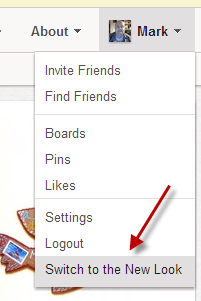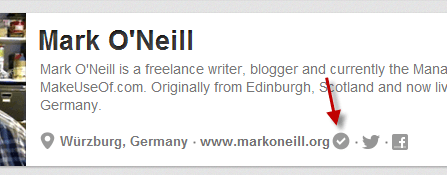
One social network that has really been on a relentless roll is Pinterest, the site that has spawned countless imitators and has made picture sharing sexy again. Now they have gone a step further in consolidating their growing and considerable userbase by making a few changes that includes jazzing up their user interface, as well as offering web analytics for images pinned from your website, so you can see how your domain images are being viewed and shared.
But first you have to jump through a few hoops before you can enable the new look and features.
The easiest thing you have to do is to click on the link to enable the new look. You can get this by clicking on your menu on the right hand side of the screen, casting your eyes downward to the bottom of the menu and clicking “Switch to the New Look”.

It will ask you if you are sure, so say yes. Don’t worry, for the moment, if you don’t like the new look, you can switch back to the old look. So there’s no harm in enabling the new look and seeing if it appeals to you. I really liked it and I think you will too. The emphasis is on bigger sizes of pinned images and a nicer looking profile.

The web analytics are available only if you have your own website and you want to know if people are sharing the images on your site, and if so, which are the most popular, who has shared them, when they were shared, and so forth. You can also look at stats within a certain calendar range, which is extremely useful if you are running a web campaign. You can download all of these stats in a CSV file for offline analysis.
In order to enable the web analytics, you must verify that the domain entered on your Pinterest profile is yours (as obviously you are not entitled to analytics belonging to a third party). There are a variety of ways to prove you are the legal owner, and anyone who has been through the Google Apps domain verification feature will see that the Pinterest verification is absolutely identical. You can either enter a meta code in your website HTML <head> code or you can upload an HTML page to your domain by FTP. Both are equally easy to do, both take literally less than 30 seconds, so it just depends on your personal preference.
Once the code is in place, Pinterest will check to see if it is there, and if so, you will be verified as the legal owner of the domain. To show that the domain has been verified, a small tick mark will appear next to your domain URL in your Pinterest profile.

Pinterest has produced a web video, explaining the features and benefits of their new analytics feature.
Analytics is really only useful if you have an image-heavy website, but my website isn’t, so it turns out that only one image from my site has been repinned. But funnily enough, this is motivation for me to start introducing more images to my site, or even to start my own Pinterest-style or Tumblr image blog, to start taking advantage of the new analytics on offer.
When you click on a pin to make the image larger, you will see other pins made by the same pinner, so you can explore what else they have discovered. You will also see at the bottom other pins from the same website. This is a great way to find great new relevant websites and images.

And if you scroll further down to below the comments area, there is also a new box which shows pins made by people who pinned the image you are currently looking at. Again, a great way to find new material.

All in all, I feel these improvements are only going to make Pinterest much bigger and better than ever before.
Are you a Pinner? If so, what do you think of these changes? If you are not a Pinner yet, will these features persuade you to sign up and start? If you have a website of your own, you are missing out on some serious traffic by not adding the Pin button. And if you have an online business that relies on graphics, why haven’t you set up your Pinterest business account yet?
Hi,I have read your information.I think your blog is more helpful.You can post some information about freelance.I want to learn more.